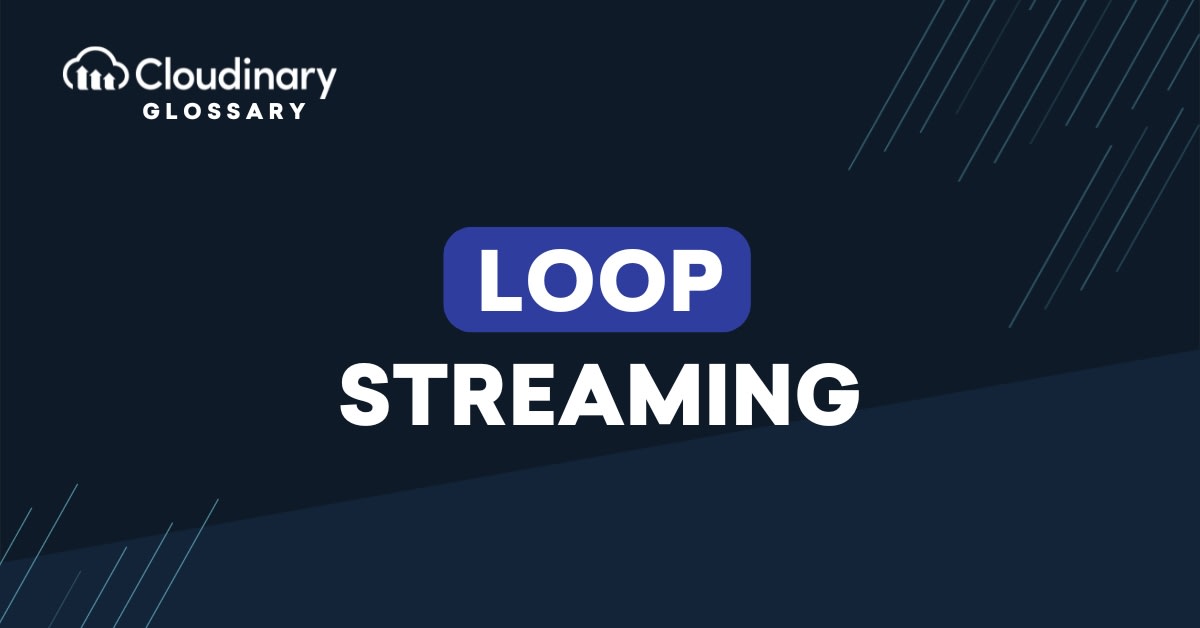
What Is Loop Streaming?
Loop streaming is a technique that allows a specific part of media content, be it audio, video, or something else, to play repeatedly without stopping. This method is often applied to scenarios where repetitive content delivery is needed, either for practical purposes (such as presentations or background music) or for entertainment value.
In simple terms, imagine a short video or song playing repeatedly in a seamless loop. Unlike standard on-demand streaming, which is linear and designed to play from start to finish, loop streaming focuses on repetition to maintain a rhythmic and consistent output.
How Loop Streaming is Used
Loop streaming has a wide range of applications across different areas of digital media, entertainment, and everyday life. Some of the most prominent applications include:
- Music and Audio Production: In music production, loop streaming enables musicians and producers to experiment with repeated sections of tracks, such as beats, riffs, or melodies. This is particularly useful in genres like EDM, hip-hop, and sound engineering.
- Social Media Content: Platforms like TikTok, Instagram, and YouTube Shorts rely heavily on short, looping content. Loop streaming allows users to create endlessly repeatable and engaging clips that keep audiences hooked.
- Live Events and Signage: In live events or retail stores, loop streaming is used to display promotional videos or informational slides on repeat. It’s also a backbone for looping content in digital billboards and kiosks.
- Meditation and Relaxation Tools: Ambient sounds, white noise, or calming visuals are often packaged as looping streams for users to enjoy a seamless and relaxing experience without breaks.
- Video Gaming: Looped elements play an integral role in video games. From background music to repeating character animations, loop streaming ensures a highly immersive experience.
- Educational Content: Presentations, tutorial clips, or visual aids for online classrooms often rely on loop streaming to reinforce messages through repetition. This is especially helpful for learners who benefit from repeatable content.
How Does Loop Streaming Work?
Loop streaming operates through media encoding and playback systems that allow seamless repetition of a chunk of media. The whole process can be broken into a few basic steps:
Media Preparation
A segment of content (whether it’s a 10-second video clip or an audio loop) is edited to begin and end seamlessly. Advanced audio-video editing tools are used to eliminate awkward transitions or cuts during the looping process.
Encoding for Looping
The prepared content is encoded in a format that supports replaying without reloading from the server. Formats like GIFs, MP4s, and MIDI files (for audio) cater directly to looping needs in digital content.
Playback System Integration
The content is delivered with playback features enabled to loop indefinitely. Player programs such as VLC for video or HTML5 for web-based loops allow users to experience uninterrupted repetition.
Adaptive Bandwidth (For Online Loops)
In online applications, adaptive bitrate streaming ensures that high-quality looped streams continue smoothly despite fluctuations in user internet connectivity.
Benefits and Drawbacks of Loop Streaming
Benefits
- Engagement Enhancement: Looped content can captivate viewers with its seamless repetition. This is why platforms like TikTok thrive.
- Resource Efficiency: Streaming shorter loops can often require less data compared to streaming full-length videos repeatedly.
- Creativity Opportunities: Looping opens creative possibilities for music producers, video creators, and app developers to focus on smaller snippets of brilliance.
- Utility in Branding and Promotion: Brands can leverage loop streaming to reinforce their message repeatedly, whether on social media or in physical retail.
- Accessibility: The repetitive nature of loops ensures that audiences who may have missed the content in real time can still fully experience it.
Drawbacks
- Limited Viewer Retention: While repetitive content can be engaging, it may irritate viewers over time, leading to a loss of interest.
- Unoptimized for Long-Form Content: Loop streaming is not suited for lengthy or narrative-driven content like films or complex tutorials.
- Repetition-Induced Fatigue: Audiences exposed to a longer loop cycle might experience fatigue or annoyance.
- Technical Challenges: Achieving seamless loops without perceptible cuts may require advanced editing skills and tools.
- Data Consumption (For Low-Resolution Formats): For poorly optimized loops, the repeated download of data can sometimes result in unnecessary bandwidth waste.
Wrapping Up
Loop streaming is an innovative and versatile technology with applications across music, entertainment, education, and commerce. Its ability to create uninterrupted, repetitive content provides immense creative and functional possibilities. However, creators must approach loop streaming carefully to avoid drawbacks like content-fatigue or technical inefficiencies.
As technology advances, we can expect loop streaming to merge seamlessly with other evolving media trends, solidifying its role in content production and consumption. Whether you’re a casual spectator or a passionate creator, loop streaming is here to stay and innovate.


